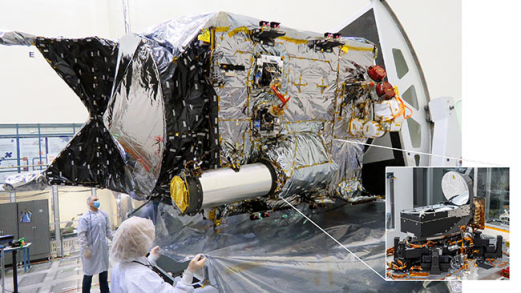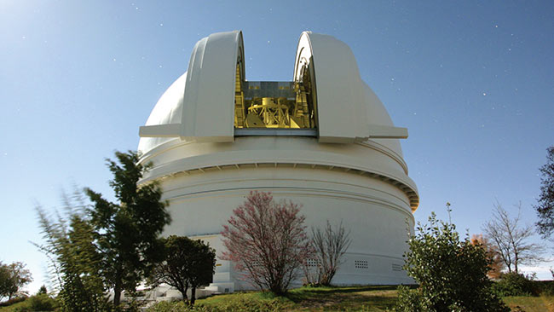Deep space near-infrared laser communication technology will help human space exploration
In the vast universe of science and technology, the pursuit of faster and more stable communication methods has always been an eternal topic in the field of deep space laser communication. However, for a long time, the radio frequency communication system has been used as the main means of communication. Although it has performed well in low-Earth orbit and missions around the moon, it has gradually revealed some limitations in the more distant deep space environment. Recently, NASA is actively exploring the application of near-infrared deep space laser communication technology to replace the existing radio frequency system and achieve a major breakthrough in deep space communication.
The new technology will be tested on the Psyche mission on October 5. It is reported that the Psyche mission is to explore an asteroid named Psyche, evaluate the surface, magnetic field, gravity and internal structure of the asteroid, and explore the possibility of commercial mining. If this test is successful, deep space near-infrared laser communication technology is expected to become a broadband communication tool for future Mars missions, improving the speed and efficiency of communication with Mars.
A flying transceiver for laser communication in deep space using near-infrared light
NASA has been focusing on laser or optical communication technology. Laser communication promises to offer much higher bandwidth for data transmission than the radio waves on which it has relied for the past half century. Near-infrared light compresses data into tighter waves, which allows more data to be transmitted in the same period of time, allowing ground-based receiving stations to receive richer information in a given amount of time.
The Deep Space Optical Communications (DSOC) flight transceiver is located inside a large tubular sunshield and telescope on the Psyche spacecraft, as shown in Figure 1.

Figure 1 Deep space optical communication flight transceiver Credit: NASA/JPL-Caltech
"DSOC is designed to be 10 to 100 times more capable of returning data than the most advanced radio systems used in space today," said Abi Biswas, a DSOC project technologist at NASA's Jet Propulsion Laboratory (JPL) in Southern California. .Although high-bandwidth laser communication technology has been proven for satellites in low-Earth orbit and orbiting the moon , there are still some new challenges and problems to use this technology in the farther deep space environment. "
The transceiver aboard the Psyche spacecraft incorporates several new technologies, including a new photon-counting camera attached to a 22-centimeter telescope protruding from the side of the spacecraft . The transceiver automatically seeks and precisely "locks on" to a high-power near-infrared laser uplink emitted by the Optical Communications Telescope Laboratory on JPL's Table Mountain facility. Not only that, the laser uplink can also realize the function of sending control commands to the transceiver.
When the transceiver successfully locks on to the uplink laser, it automatically aligns itself with the 5.1 m Hale telescope at Caltech's Palomar Observatory. The Hale telescope is equipped with a new type of superconducting detector, which can effectively receive the high-speed downlink data link of the DSOC flight transceiver, as shown in Figure 2. The transceiver will then use its near-infrared laser to transmit data at high speed to the observatory. Since the spacecraft may vibrate during operation, this vibration may cause the laser signal to deviate from the target. To avoid this, the Psyche spacecraft uses cutting-edge bracket technology to connect the transceivers. These brackets can effectively reduce vibration and ensure that the laser is precisely aligned with the target.

To receive the high-speed downlink laser light from the DSOC transceiver, the Hale telescope is equipped with a new superconducting nanowire single-photon detector assembly. The assembly is cryogenically cooled to precisely detect a single incident laser photon, the quantum particle of light, and record its arrival time.
Challenges and Prospects: Delay Compensation and Weak Signal Extraction
The laser light was transmitted in trains of pulses, spanning a distance of up to 300 million kilometers, the furthest the spacecraft has traveled in this technology demonstration. Lasers have to travel such long distances that their faint signals can be detected and processed to extract information.
The distance issue also presents another challenge: The farther the Psyche spacecraft is from Earth, the longer it takes for the laser signal it sends to reach Earth, so there can be a delay of tens of minutes. During the transmission of the laser signal, since both the earth and the spacecraft are moving, their relative positions will change. In order to ensure that the information received is accurate and useful, this deviation due to time lag and position changes needs to be compensated.
DSOC will operate for nearly two years after launch on NASA's Psyche mission, heading to Mars in 2026. While the DSOC transceiver will be hosted by the Psyche spacecraft, the technology demonstration does not involve processing, sending or receiving actual data related to the Psyche mission. The performance and results of both will be assessed separately.







